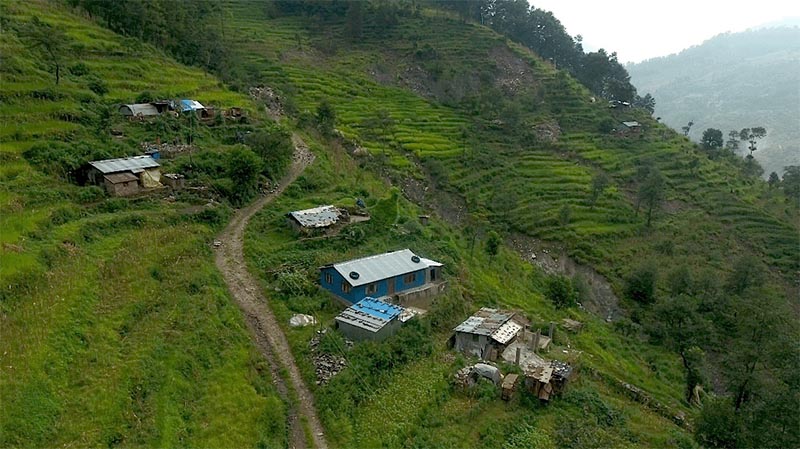Reconstruction on cracked land
Sindhupalchowk, January 6
Som Bahadur Bishwokarma, a 2015 earthquake survivor from Hindi Village of Bhoteskoshi Rural Municipality, Sindhupalchowk, is building a two-room house with government grant although the area is unsuitable for living.
“My land sustained cracks after the earthquake making it vulnerable to landslides. They deepened during monsoon. So I am not sure the house will survive the next monsoon,” he said.
Som Bahadur said he had no option but to start building the house on the landslide-prone plot because the government had made it mandatory for quake survivors, who had received the first tranche of the reconstruction grant to start building quake-resistant houses to be eligible for the rest of the aid money.
Like Som Bahadur, several quake survivors who started building houses are aware that their land is uninhabitable.
Of the total 83,663 quake survivors eligible for reconstruction grant of Rs 300,000 in Sindhupalchowk district, 75,555 have received the first tranche of Rs 50,000.
They have to start building quake-resistant houses to get the second tranche of Rs 150,000. After completing construction, they will get the third tranche of Rs 100,000. Government-deployed engineers monitor the construction.
“The area has caved in at least 15 feet after the earthquake,” said Bhotekoshi Rural Municipality-4 Ward Chairman Sang Dorje Sherpa.
The situation is such that the entire area, which is a 15-minute walk from Araniko Highway, shakes even when big trucks ply, said Tanka Kumari Bishwokarma, a local. “Also, massive soil erosion caused by the nearby Bhotekoshi River plus landslides from the hilltop make the area vulnerable,” she said.
“The villagers’ fear is understandable given the fact that Som Bahadur’s younger brother Bachhu Bishwokarma started building his house before the last monsoon, but could not complete it after a landslide resulted in land cave-in damaging the foundation and breaking the erected pillars,” said Sherpa.
Bachhu had relocated to the village buying a four-anna plot thinking it would be safer than his native place. He is currently living in the same half-built-partly-destroyed house, which he has covered with zinc sheets. Bachhu, who has taken the first tranche of the government grant, is confused whether he will get the rest of the aid money.
Engineer Siya Ram Sahani, who was deployed in the village to monitor reconstruction, said despite repeated warnings not to build in the vulnerable area, the villagers did not listen. “We do not have any option but to monitor their construction as they themselves started building houses stating they did not own land in other areas,” he said.
Several other villages in the rural municipality are uninhabitable. They include Aermala with 45 households, Selankatti 65,Takpasa 15, Fulping 35, Pansherpu 15 and Hindi 100, according to Sherpa.
The National Reconstruction Authority, is however, ignorant about the situation even though some villagers are in the process of getting the final tranche of the grant after completion of their houses.
NRA Secretary Madhu Sudan Adhikari told The Himalayan Times. “We can conduct a geological study, but for that complaints have to be lodged.” He said if the geological study found any land uninhabitable, the households would be relocated to safer places. Those who have to be relocated get an extra Rs 200,000 to buy land plots. However, the situation is different at Bhotekoshi Rural Municipality as the locals have to be relocated after starting to build houses using the first tranche of grant money. “We need to hold discussion with stakeholders before we come up with any solution,” said Adhikari.
Reconstruction update in Nepal
Households surveyed
996,582
Eligible for housing grants
767,705
Retrofitting beneficiaries identified
24,991
Agreement signed with beneficiaries
677,407
Beneficiaries who received the first tranche
665,934
Beneficiaries for whom second tranche has been approved
155,964
Beneficiaries for whom third tranche has been approved
44,240






